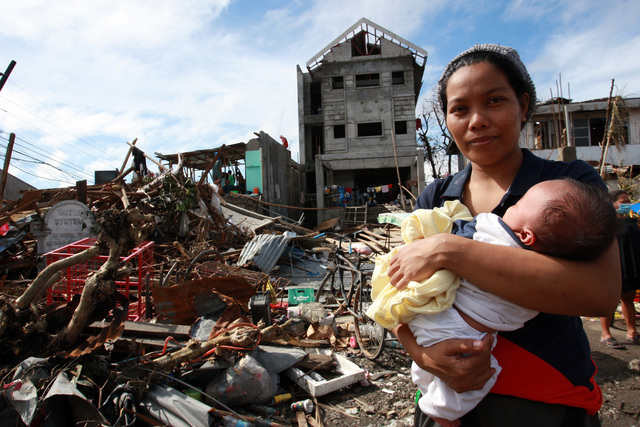联合国儿童基金会:气候变化的冲击 儿童首当其冲
2015-11-24

© UNICEF/NYHQ2013-1027/Maitem
一名妇女和她的婴儿站在菲律宾超强颱风海燕造成的废墟中。
超过5亿儿童生活在经常氾滥成灾的地区,1.6亿儿童生活在严重干旱地区
纽约/日内瓦/香港,2015年11月24日—联合国儿童基金会在联合国召开第21届气候变化大会(即COP21)前发佈的一份报告中说,全球有超过5亿儿童生活在洪水经常氾滥成灾的地区,並有1.6亿儿童生活在严重干旱地区。这些儿童极可能因气候变化而受到冲击。
生活在经常氾滥成灾的地区的5.3亿儿童中,有大约3亿儿童于过半人口属贫困国家生活–亦即是说,他们每天的生活费不足3.1美元(约24港元)。至于生活在严重干旱地区的儿童中,有500万于过半人口属贫困国家生活。
联合国儿童基金会执行主任安东尼.雷克指出:「这些数据说明时间紧逼,必须采取行动。目前这一代儿童对气候变化应付最少的责任,但是他们和他们的后代将与气候变化造成的后果一起生活,而往往最弱势的社区面对的威胁最大。」
气候变化意味着更多干旱、洪水和热浪等恶劣天气。这些天气现象将造成死亡、带来破坏,並加剧儿童致命疾病的扩散,如营养不良、疟疾和腹泻。这将造成一个恶性循环:在危机发生前本来已经无法获得充足饮用水和卫生设施的儿童,将更有可能、更难以从洪水、干旱或者超强风暴等恶劣天气中尽快恢復过来;甚至在之后的危机中,面对更大的风险。
生活在经常氾滥成灾地区的儿童大部分均在亚洲,而生活在干旱易发区的儿童则大多数在非洲。
11月30日至12月11日在巴黎参加COP21会议的世界领导人,会于削减温室气体排放问题上寻求共识。很多专家指出,削减温室气体排放,对于防止全球温度灾难性上升非常重要。
雷克说:「我们知道应该怎么做才能预防气候变化造成的破坏性的影响。袖手旁观並不合情理。为了我们的下一代,为了我们的地球,我们必须在COP21大会上作出正确的决定。」
| 捐款支持UNICEF的全球工作项目 |









